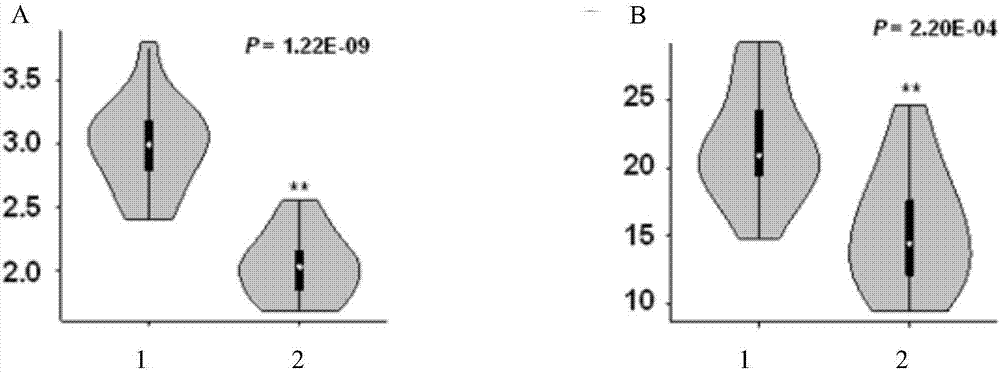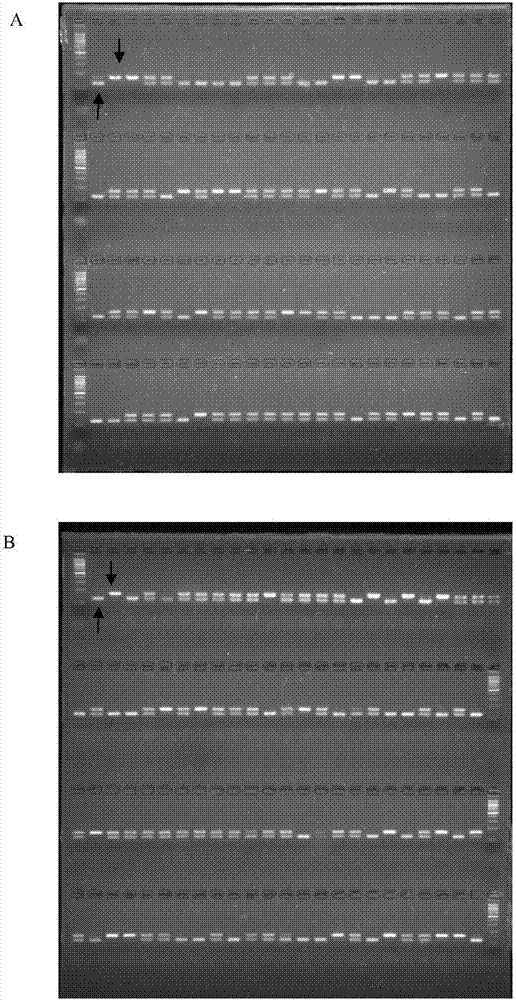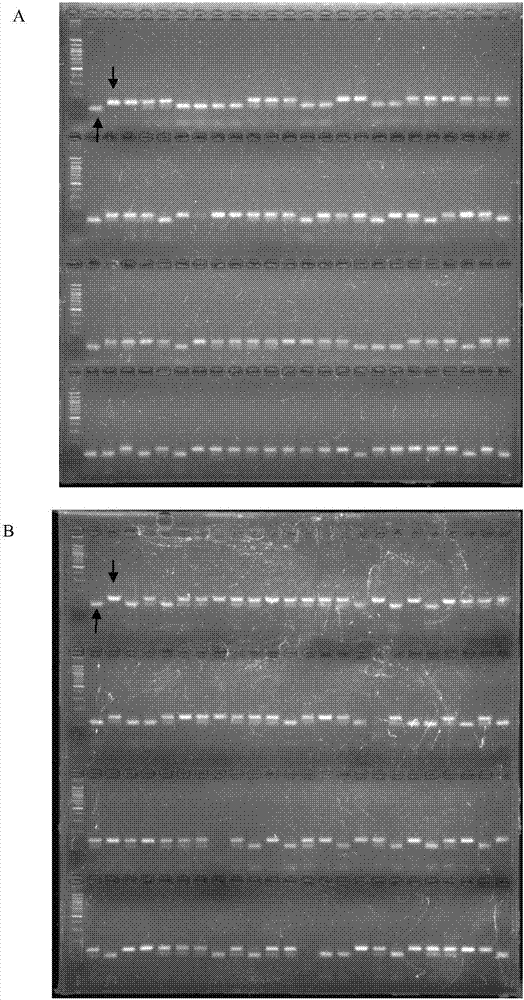Linkage marker of tomato fruit hardness property, and application thereof
A tomato and fruit technology, applied in the determination/inspection of microorganisms, DNA/RNA fragments, recombinant DNA technology, etc.
- Summary
- Abstract
- Description
- Claims
- Application Information
AI Technical Summary
Problems solved by technology
Method used
Image
Examples
Embodiment 1
[0070] Example 1, Discovery of linked markers
[0071] 1. Crossbreed tomato 'Moneymaker' and tomato LA1310 as parent materials, and obtain F10 generation RILs population consisting of 200 recombinant inbred lines by single seed propagation method.
[0072] 2. Through the resequencing of the RILs population obtained in step 1 and the genome-wide association analysis of fruit firmness-related traits, QTLs for fruit firmness-related traits were obtained, of which there were 7 QTL sites with p-5 , located within the interval of 0.2M on chromosome 10. In this interval, two pairs of applicable linkage marker primer pairs were designed and synthesized, named as linkage marker primer pair I (composed of primer L-1 and primer R-1) and linkage marker primer pair II (composed of primer L-2 and Primer R-2 composition), the primer information is shown in Table 1.
[0073] Table 1 Primer information
[0074] Primer name Primer sequence (5'-3') L-1 CTGTGACAGTCATTGTGAGCTC ...
Embodiment 2
[0075] Example 2, Establishment of a method for identifying tomato genotypes to be tested using linked marker primer pairs
[0076] 1. Extract the genomic DNA of the tomato to be tested, use the genomic DNA as a template, perform PCR amplification with primer L-1 and primer R-1, and perform agarose gel electrophoresis on the PCR amplification product.
[0077] 2. Extract the genomic DNA of the tomato to be tested, use the genomic DNA as a template, and use primer L-2 and primer R-2 to carry out PCR amplification, digest the amplified product with spe I for 8 hours, and perform agarose gelation on the digested product Gel electrophoresis.
[0078] 3. Combine the electrophoresis results of step 1 and step 2 for the following analysis:
[0079] If the PCR amplification product obtained in step 1 has a DNA fragment of 126bp and does not contain a DNA fragment of 165bp, and the enzyme digestion product obtained in step 2 has a DNA fragment of 116bp and does not have a DNA fragment...
Embodiment 3
[0082] Example 3, the application of linked marker primer pairs in judging tomato fruit firmness
[0083] 1. Select the ST059 strain (through sampling detection, all plants of the strain are MM homozygous) and the ST052 strain (through sampling detection, the strain All plants in the line were homozygous for CC).
[0084] 2. Cross the ST059 strain and the ST052 strain as parents to obtain F 1 Generation plants; the F 1 The generation plant was backcrossed with the parent ST059 strain for 3 generations, and then selfed for another generation to obtain BC 4 f 2 group.
[0085] 3. BC obtained from step 2 4 f 2 200 individual plants were randomly selected from the population, and the genomic DNA was extracted.
[0086] 4. Detection of genotype
[0087] The tomatoes to be tested were tomato 'Moneymaker', tomato LA1310 and 200 individual plants obtained in step 3.
[0088] The genotype of the tomato to be tested was detected by the method in Example 2.
[0089] When using ...
PUM
 Login to View More
Login to View More Abstract
Description
Claims
Application Information
 Login to View More
Login to View More - R&D
- Intellectual Property
- Life Sciences
- Materials
- Tech Scout
- Unparalleled Data Quality
- Higher Quality Content
- 60% Fewer Hallucinations
Browse by: Latest US Patents, China's latest patents, Technical Efficacy Thesaurus, Application Domain, Technology Topic, Popular Technical Reports.
© 2025 PatSnap. All rights reserved.Legal|Privacy policy|Modern Slavery Act Transparency Statement|Sitemap|About US| Contact US: help@patsnap.com



